In home or hotel renovations, wooden furniture is often the top choice for those who value quality living. However, due to the high cost of natural wood, not everyone can or is willing to afford the expense. As an alternative, engineered wood has gradually become an affordable option. With a wide variety of engineered wood materials available for furniture making, it is always recommended for both homeowners and contractors to understand the characteristics of these materials and make an informed choice. This article aims to assist you in making the best decision by comparing 5 common types of engineered wood.
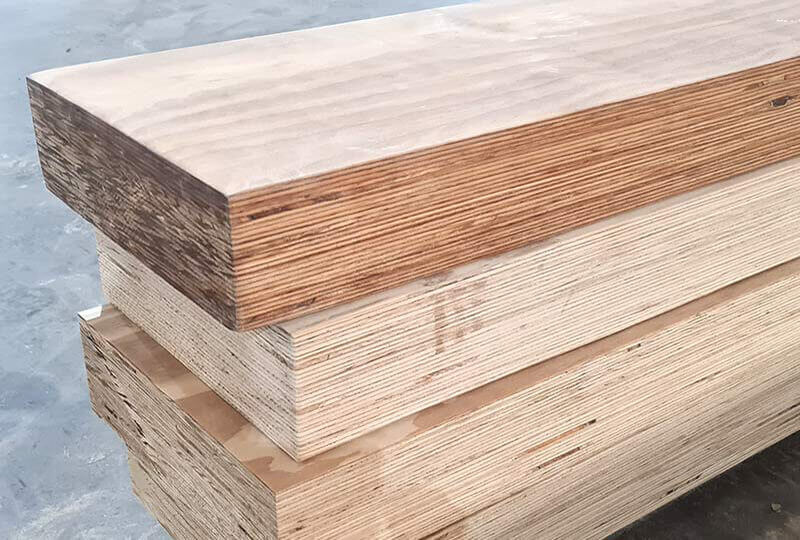
Laminated Veneer Lumber
Laminated Veneer Lumber, commonly known as LVL, is a type of engineered wood made by stacking and hot-pressing veneers, typically about 3mm thick, along the grain direction, and then sawing them into the desired dimensions. This material effectively addresses the shortcomings of fast-growing artificial wood, such as its soft texture, low strength, and dimensional variability, thereby turning waste into treasure and alleviating the contradiction of wood shortages.
-
Advantages
- The parallel arrangement of the fibers gives LVL higher bending and compressive strength.
- It offers excellent stability, making it resistant to warping, twisting, or deforming even after long-term use.
-
Disadvantages
- The appearance is industrial and not aesthetically pleasing, making it unsuitable for exposure.
- Due to its high density and strength, it is challenging to process.
-
Applications
- Suitable for large or load-bearing furniture, mainly used to provide structural support, such as frames and supports.
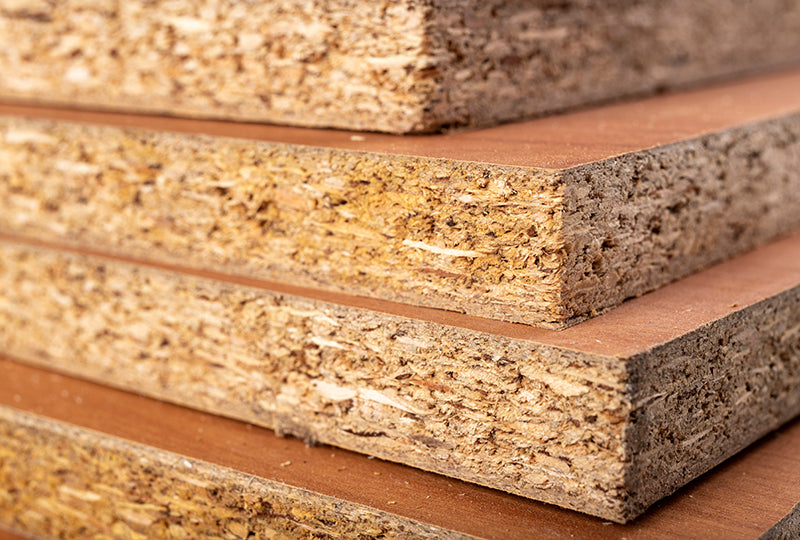
Laminated Strand Lumber
Laminated Strand Lumber, or LSL, is an innovative engineered wood product. It is made from similar raw materials to oriented strand board, primarily long strands of fast-growing poplar or aspen trees. Although they look similar, the fibers in LSL are randomly oriented and typically distributed along the length of the material.
-
Advantages
- The random fiber orientation gives LSL excellent resistance to crack propagation.
- Made from leftover wood, it increases material efficiency.
- It is less prone to warping or shrinking, even in humid environments.
-
Disadvantages
- The surface may be rough and usually requires secondary processing before use.
- Heavier than other engineered woods, which can make handling and installation less convenient.
-
Applications
- Primarily used in making structural furniture and building components such as trim boards, wall studs, and doors.
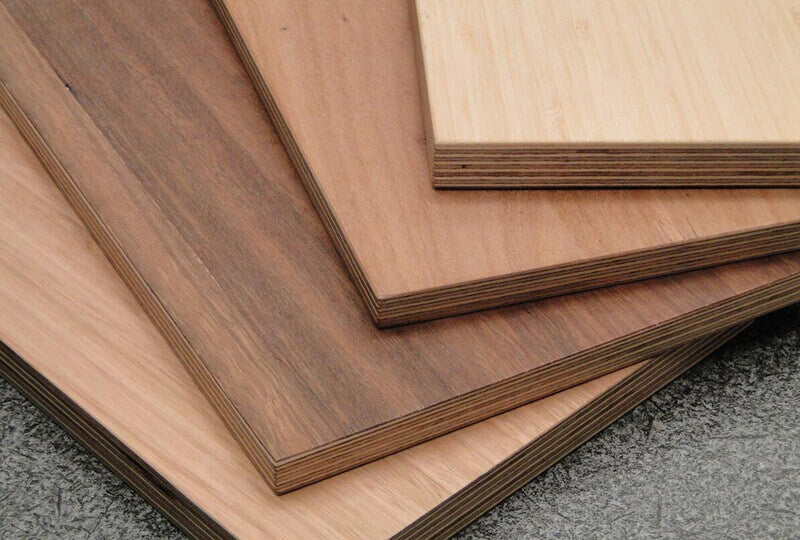
Plywood
Plywood is a composite wood material made by gluing together multiple layers of thin wood veneers, with each layer's fibers oriented perpendicular to the adjacent layer. This design significantly enhances plywood's strength and dimensional stability. Plywood usually consists of an odd number of layers, ranging from 3 to 13, to ensure symmetry, which includes factors like wood species, veneer thickness, number of layers, manufacturing methods, fiber direction, and veneer moisture content.
-
Advantages
- The cross-grain arrangement and perpendicular fiber orientation give it excellent bending strength.
- Can be easily cut, drilled, and processed into various sizes and shapes to meet furniture design requirements.
- Maintains high moisture resistance, even in damp environments.
-
Disadvantages
- Cut edges may reveal obvious layers, often requiring additional edge treatment or finishing to enhance appearance.
- Although it can be finished in various ways, its texture is never as natural or unique as solid wood.
-
Applications
- Widely used in furniture making, from bathroom vanities and bookshelves to bed frames.
-
30" Modern Light Wood Freestanding Bathroom Vanity with Ceramic Sink, Large Storage Vanity 2 Doors
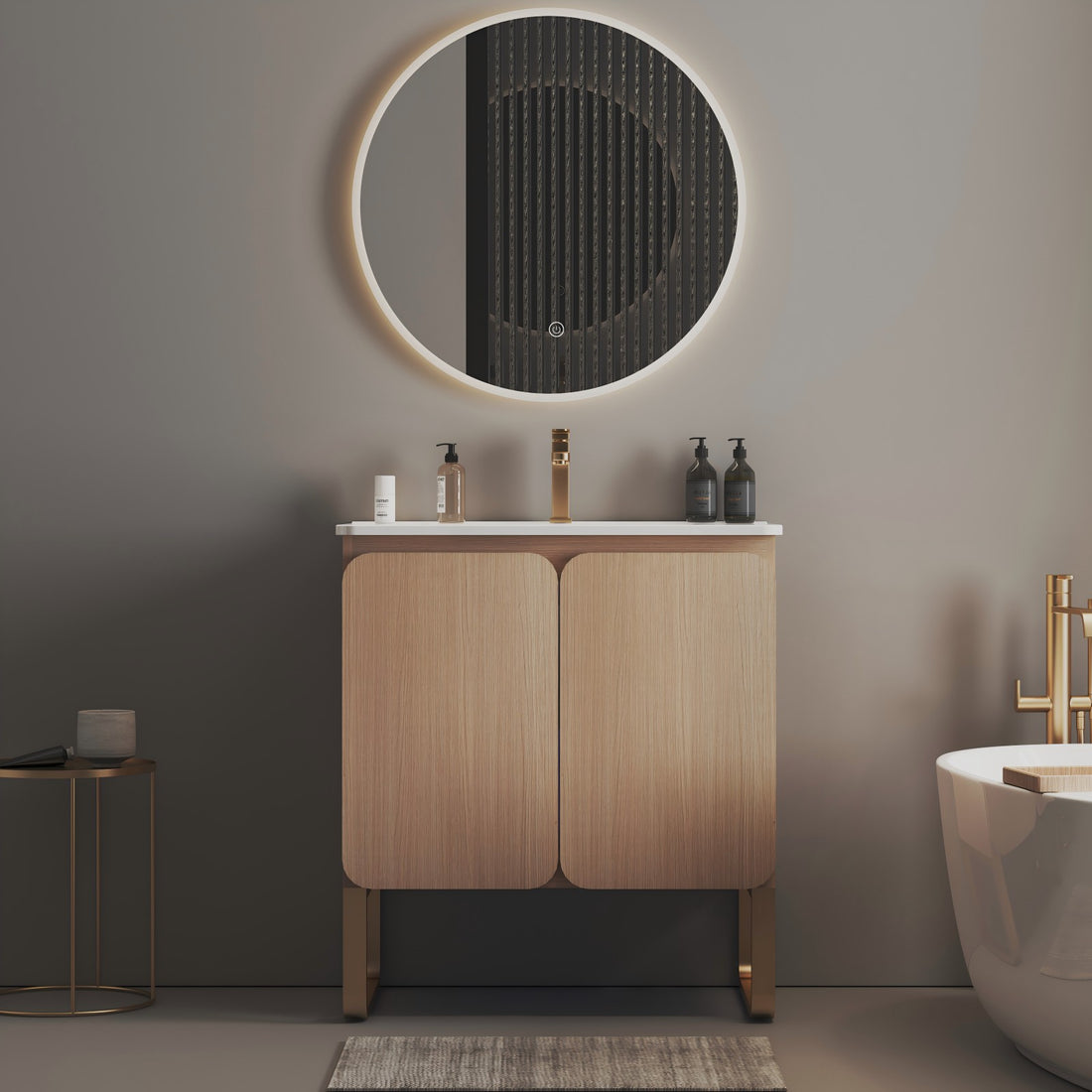
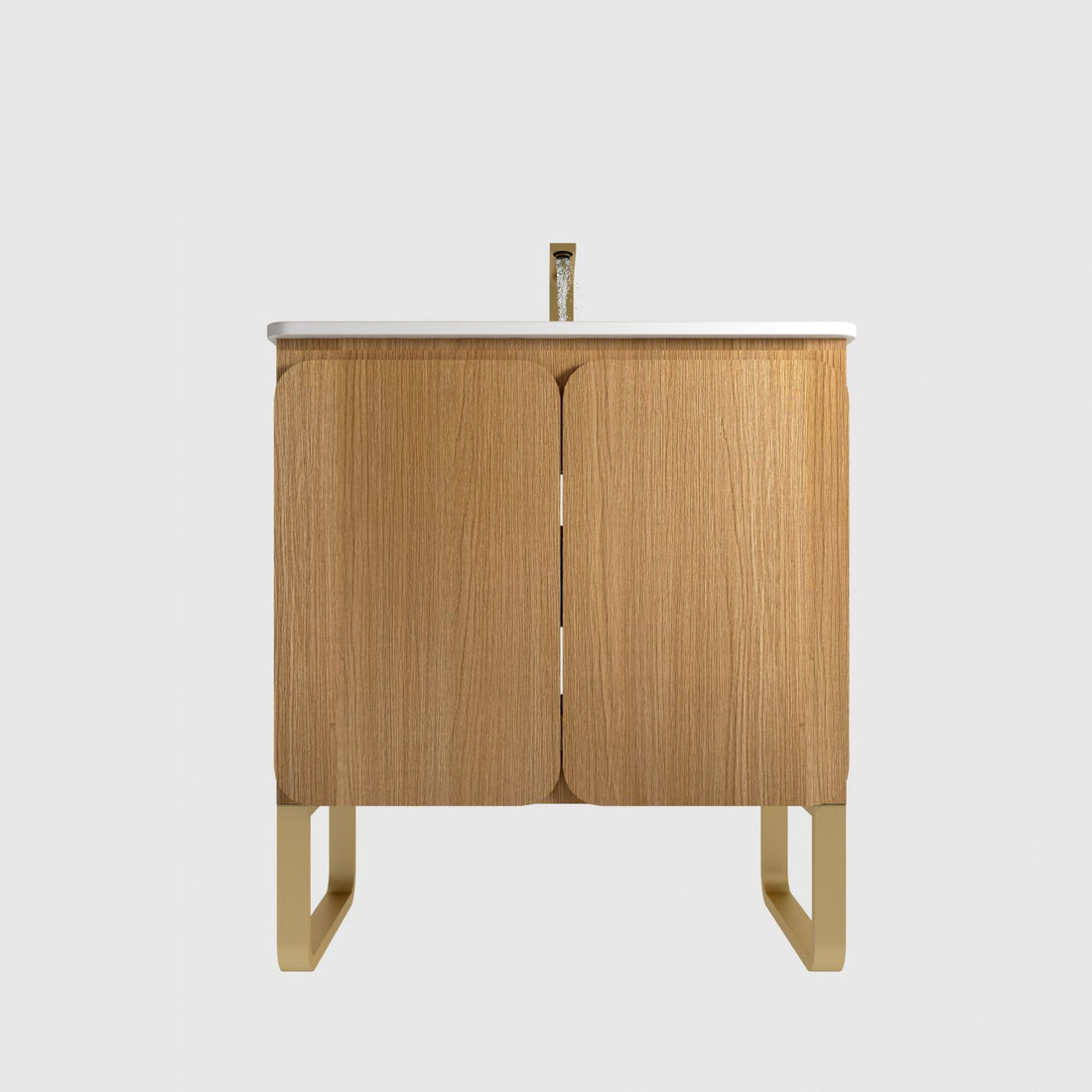 30" Modern Light Wood Freestanding Bathroom Vanity with Ceramic Sink, Large Storage Vanity 2 Doors
30" Modern Light Wood Freestanding Bathroom Vanity with Ceramic Sink, Large Storage Vanity 2 Doors- Regular price
-
$429.99 - Regular price
-
$699.99 - Sale price
-
$429.99
Quick view
-
60" Black Chestnut Freestanding Bathroom Vanity with Double Resin Sinks & Soft-Close Doors
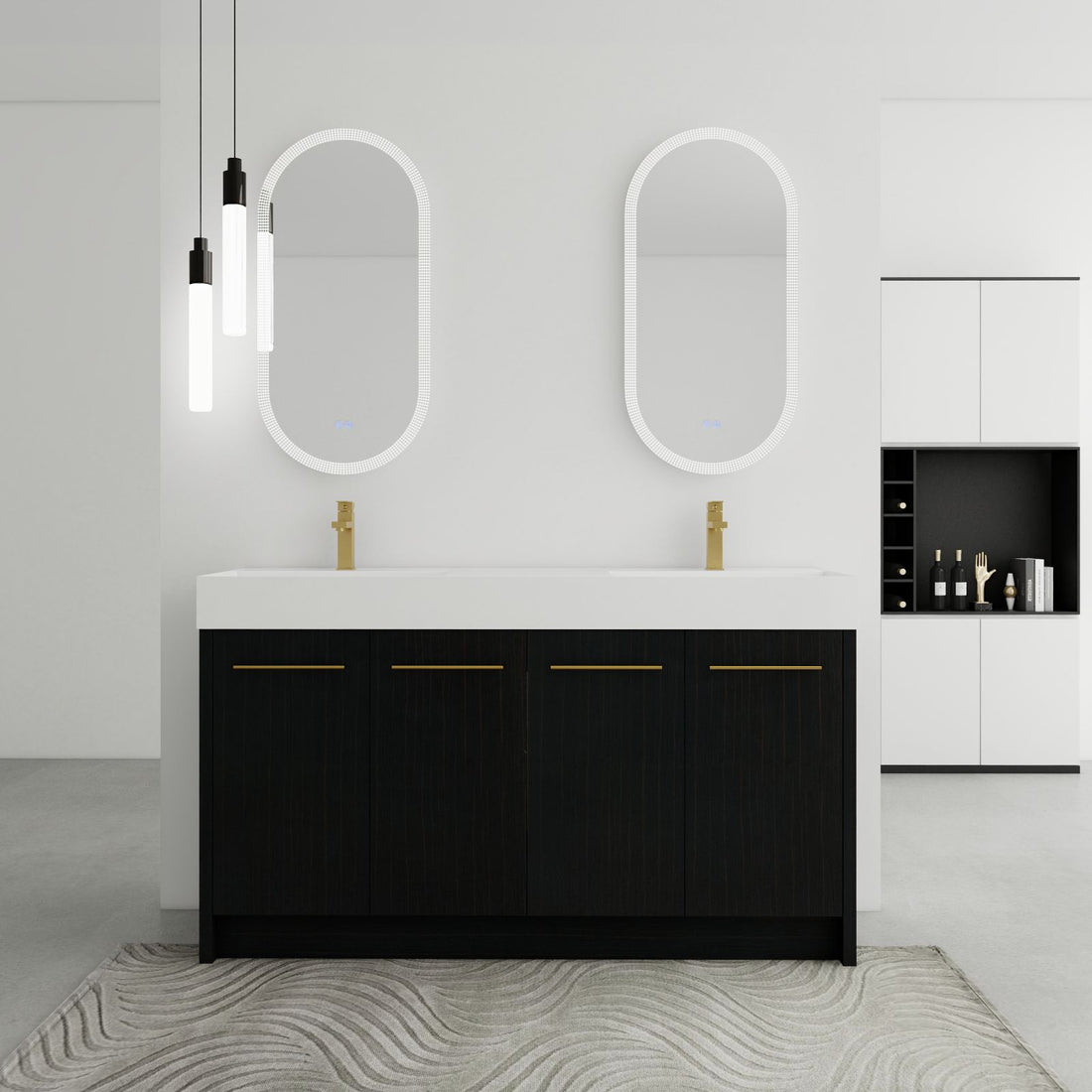
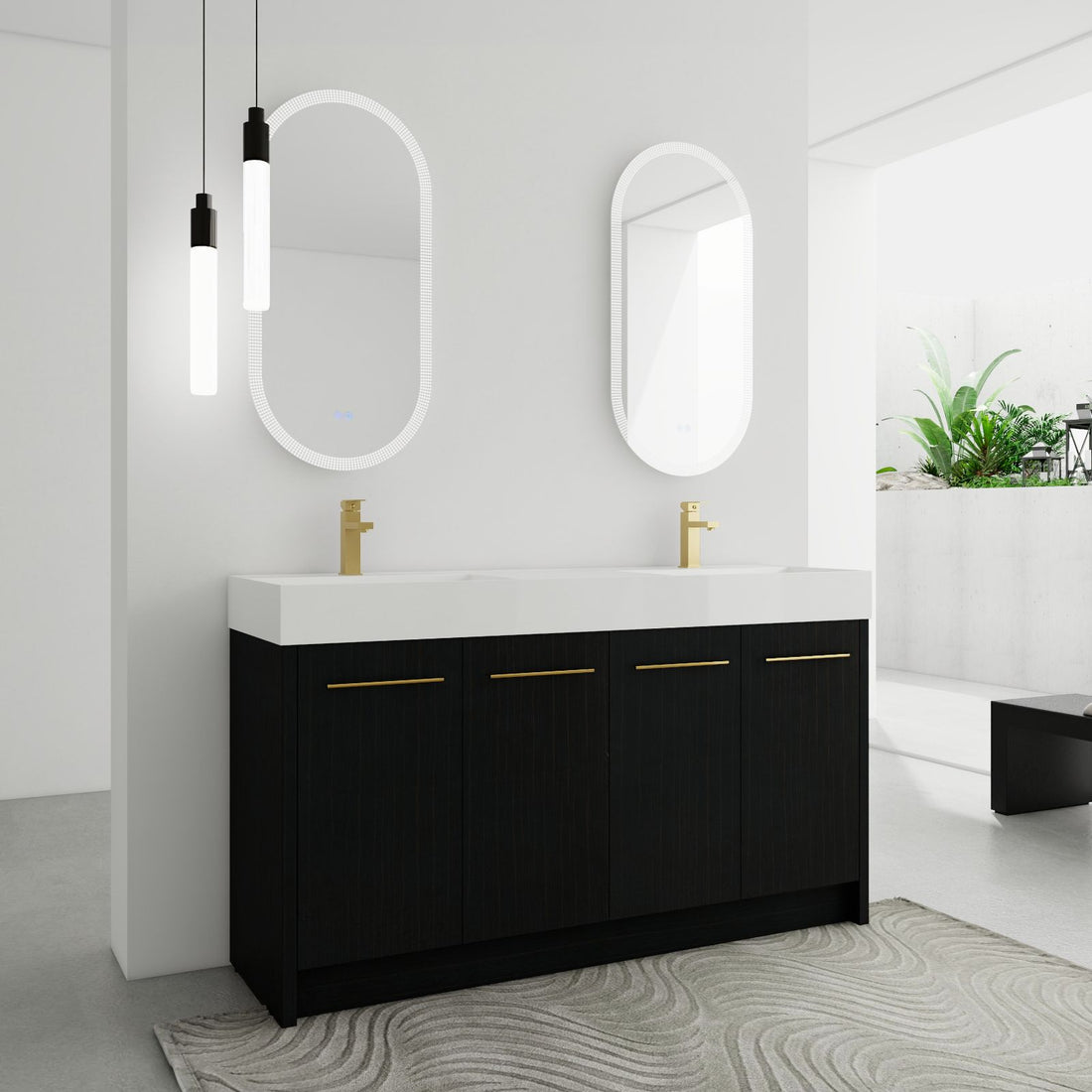 60" Black Chestnut Freestanding Bathroom Vanity with Double Resin Sinks & Soft-Close Doors
60" Black Chestnut Freestanding Bathroom Vanity with Double Resin Sinks & Soft-Close Doors- Regular price
-
$1,799.99 - Regular price
-
- Sale price
-
$1,799.99
Quick view
-
30" Black Walnut Floor-Standing Vanity with R36 Arc Basin & Soft-Close Doors
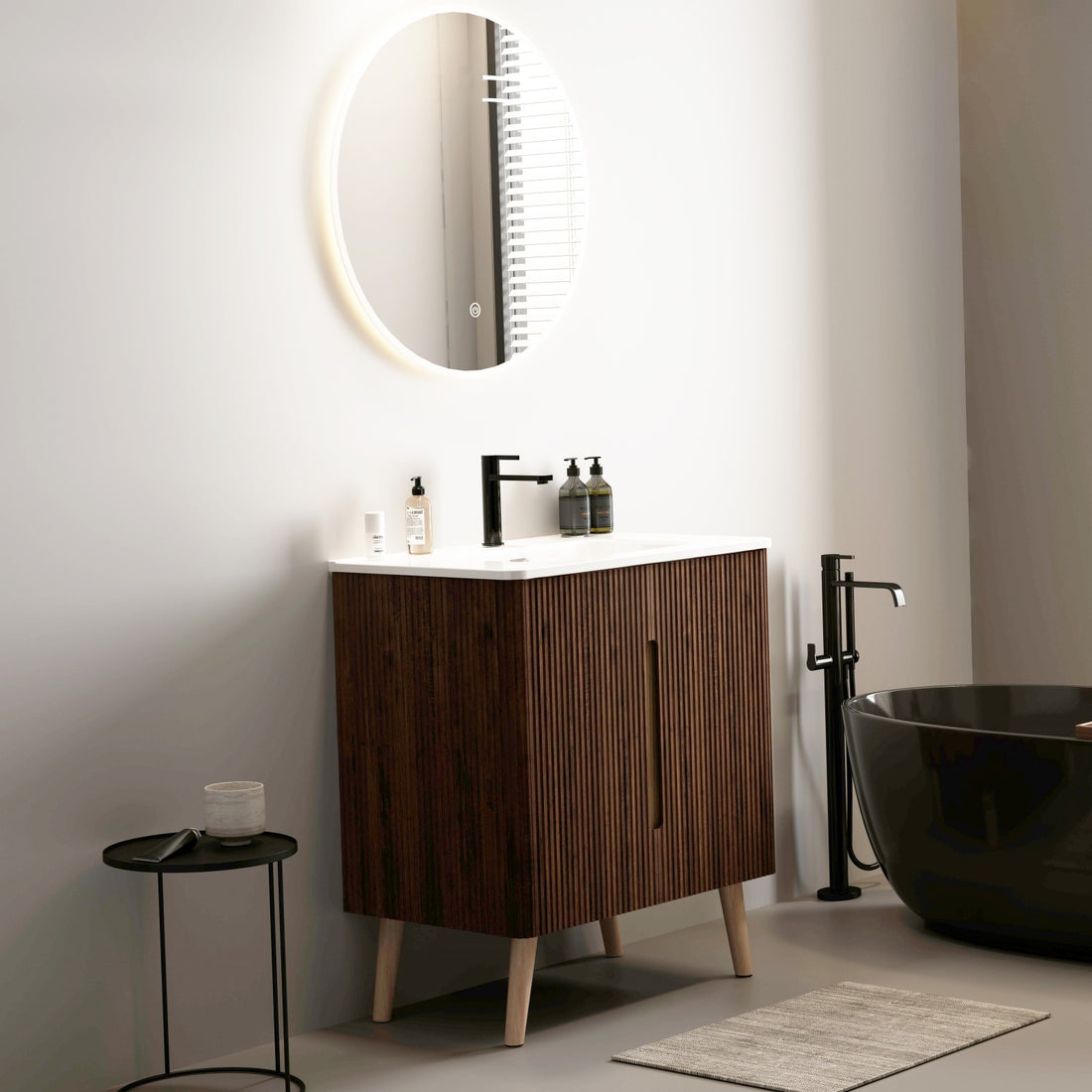
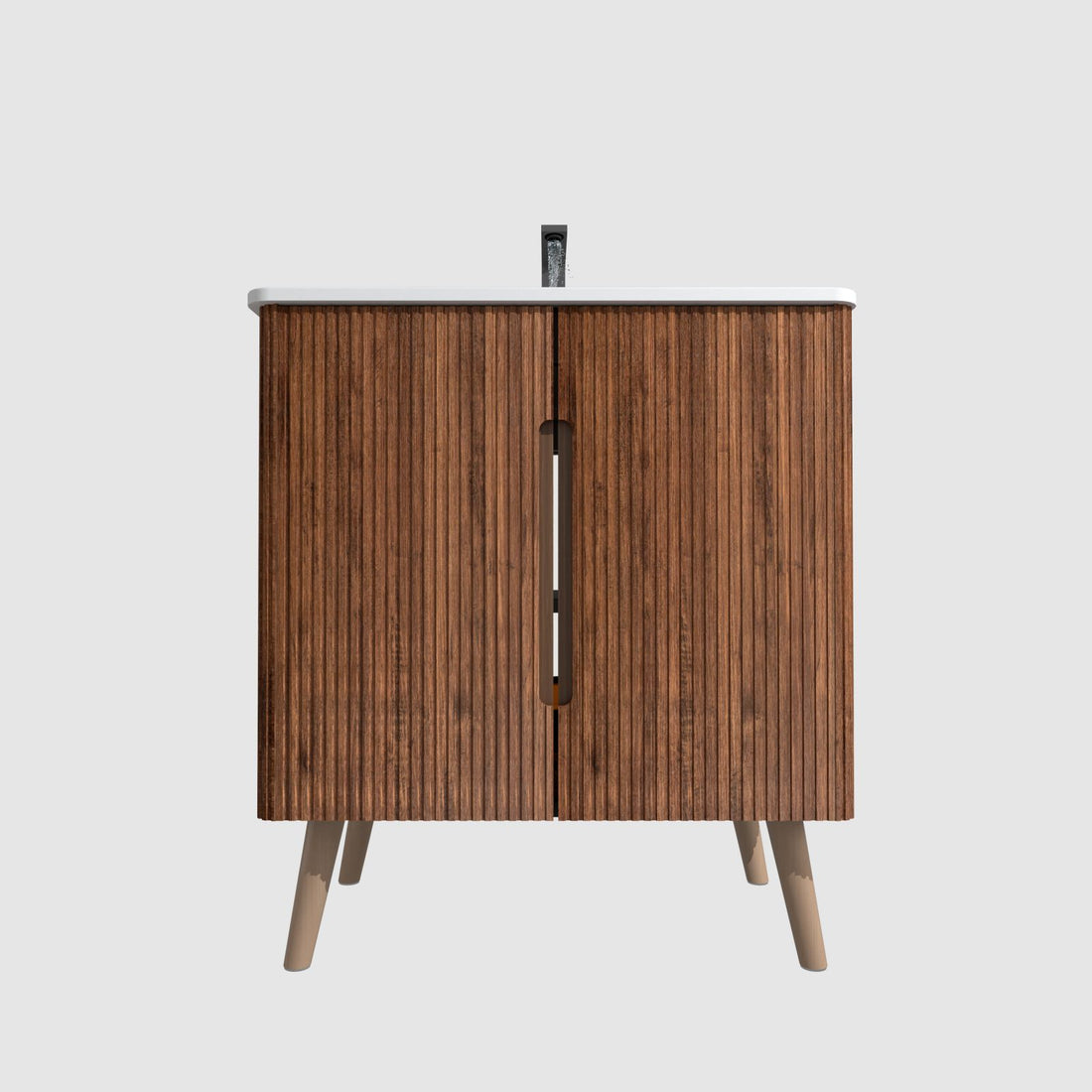 30" Black Walnut Floor-Standing Vanity with R36 Arc Basin & Soft-Close Doors
30" Black Walnut Floor-Standing Vanity with R36 Arc Basin & Soft-Close Doors- Regular price
-
$629.99 - Regular price
-
$899.99 - Sale price
-
$629.99
Quick view
-
60" Wall Mounted Bathroom Storage Vanity with Double Undermount Sink & LED
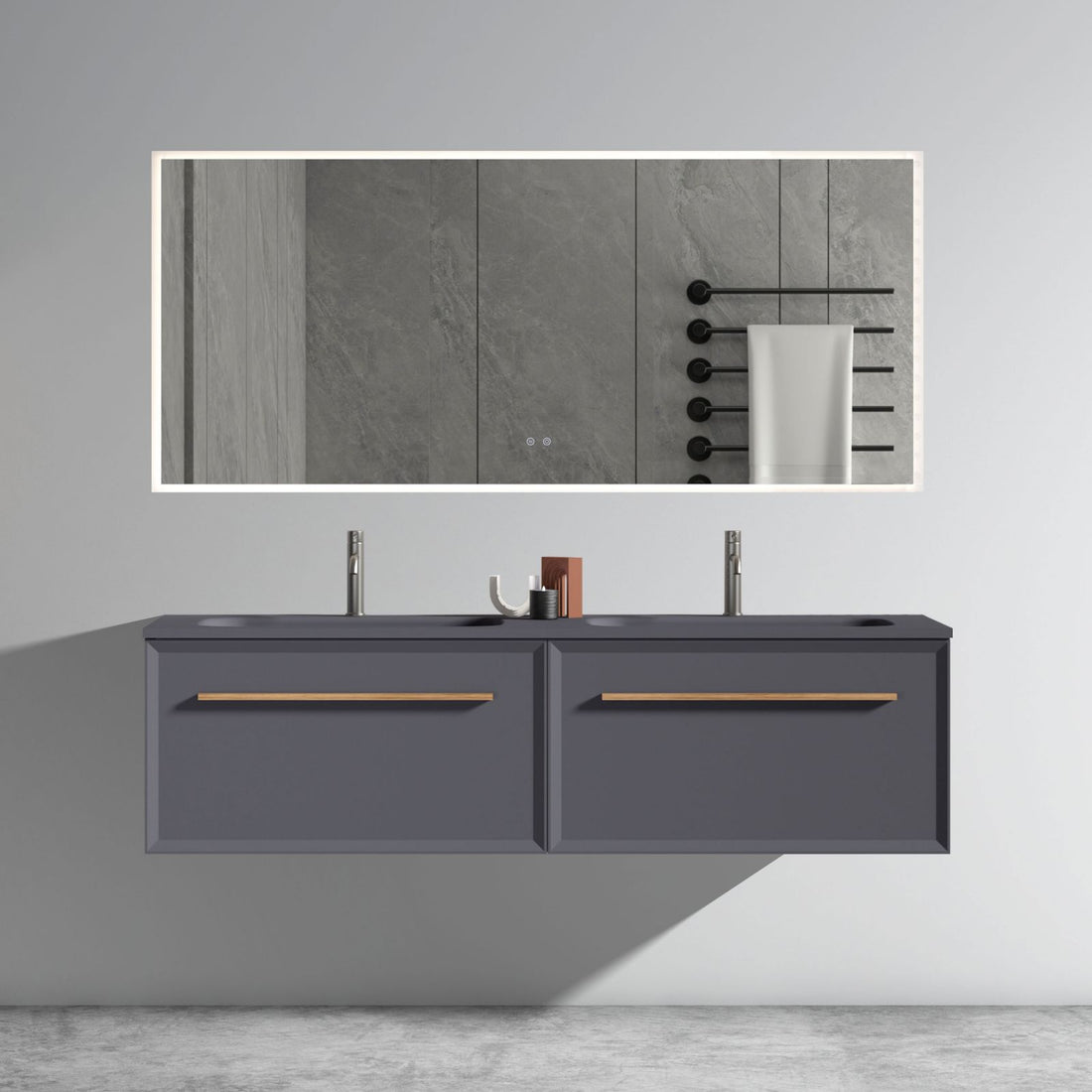
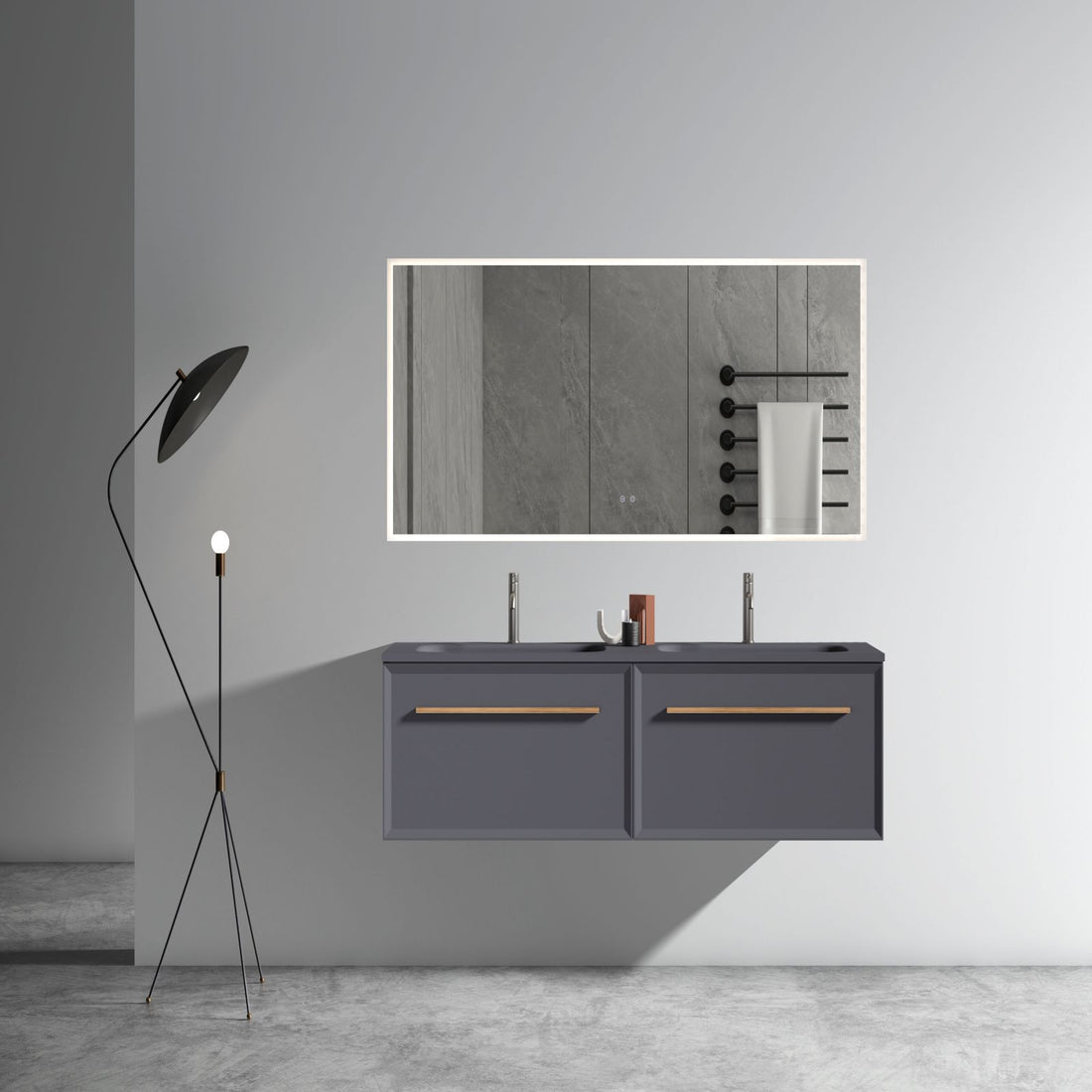 60" Wall Mounted Bathroom Storage Vanity with Double Undermount Sink & LED
60" Wall Mounted Bathroom Storage Vanity with Double Undermount Sink & LED- Regular price
-
$1,899.99 - Regular price
-
- Sale price
-
$1,899.99
Quick view
-
32 Inch Wall-Mounted Bathroom Vanities with Tops and Soft Close Door
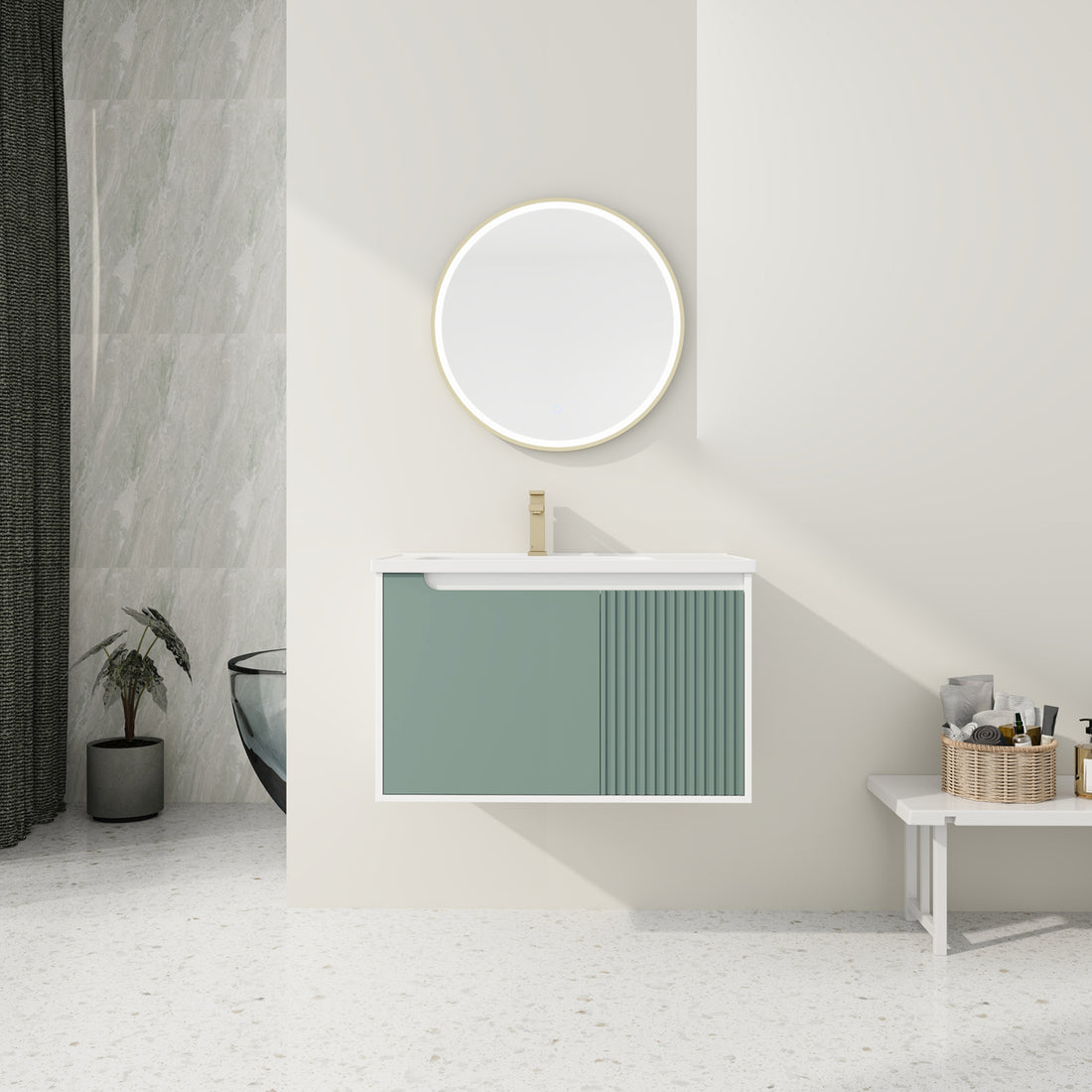
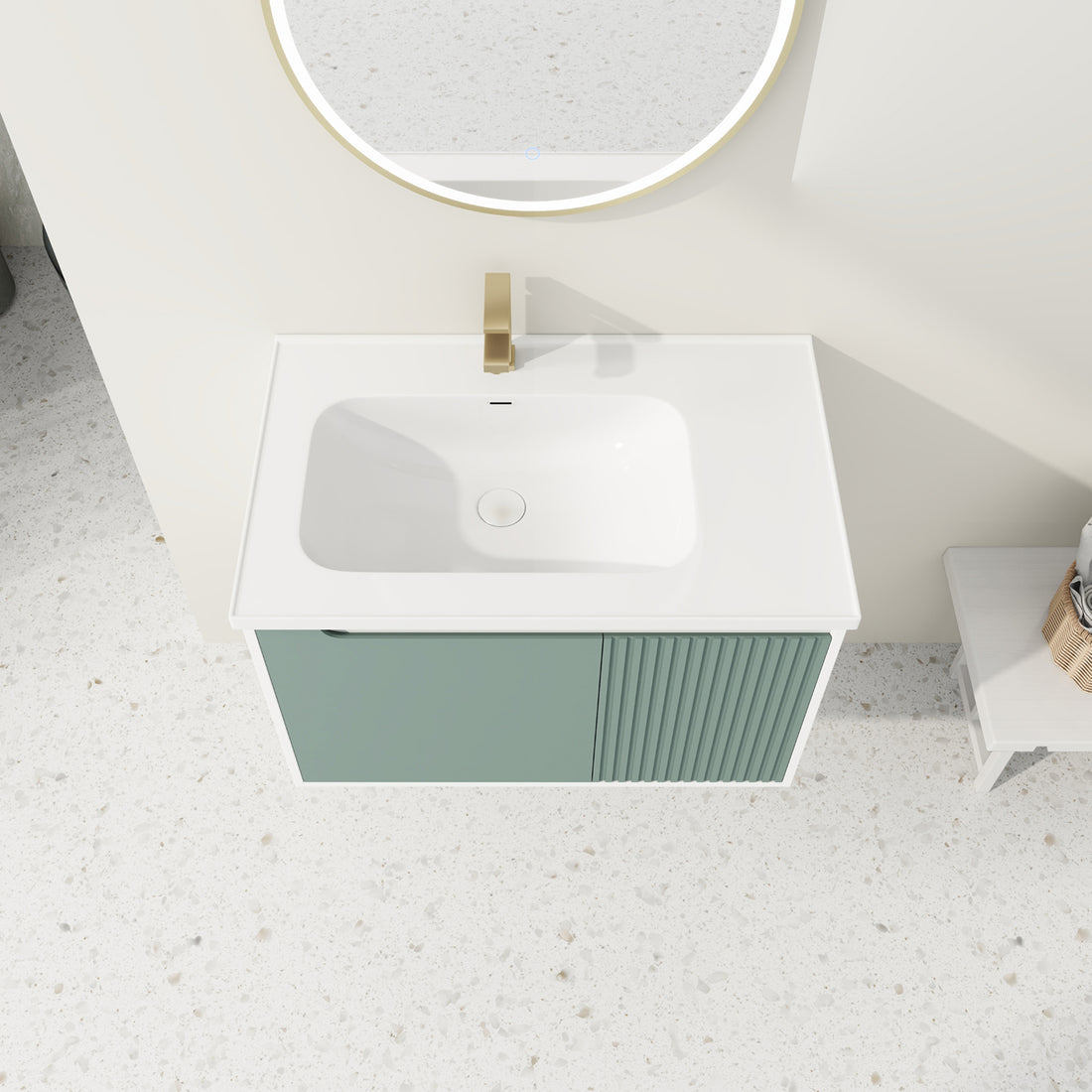 32 Inch Wall-Mounted Bathroom Vanities with Tops and Soft Close Door
32 Inch Wall-Mounted Bathroom Vanities with Tops and Soft Close Door- Regular price
-
$679.99 - Regular price
-
- Sale price
-
$679.99
Quick view
-
Giving Tree 60" Wall-mounted Bathroom Vanity with Sink and Storage Shelves
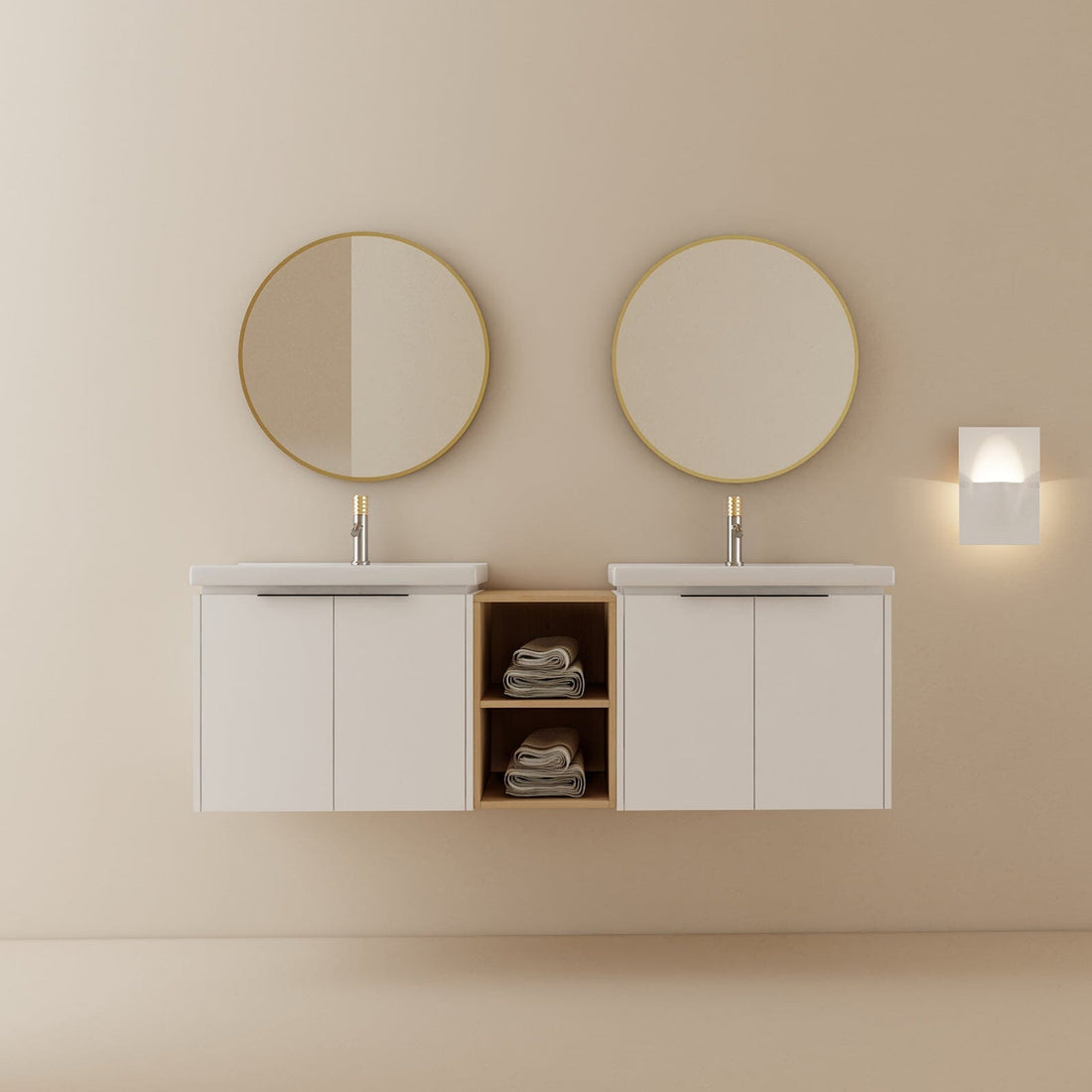
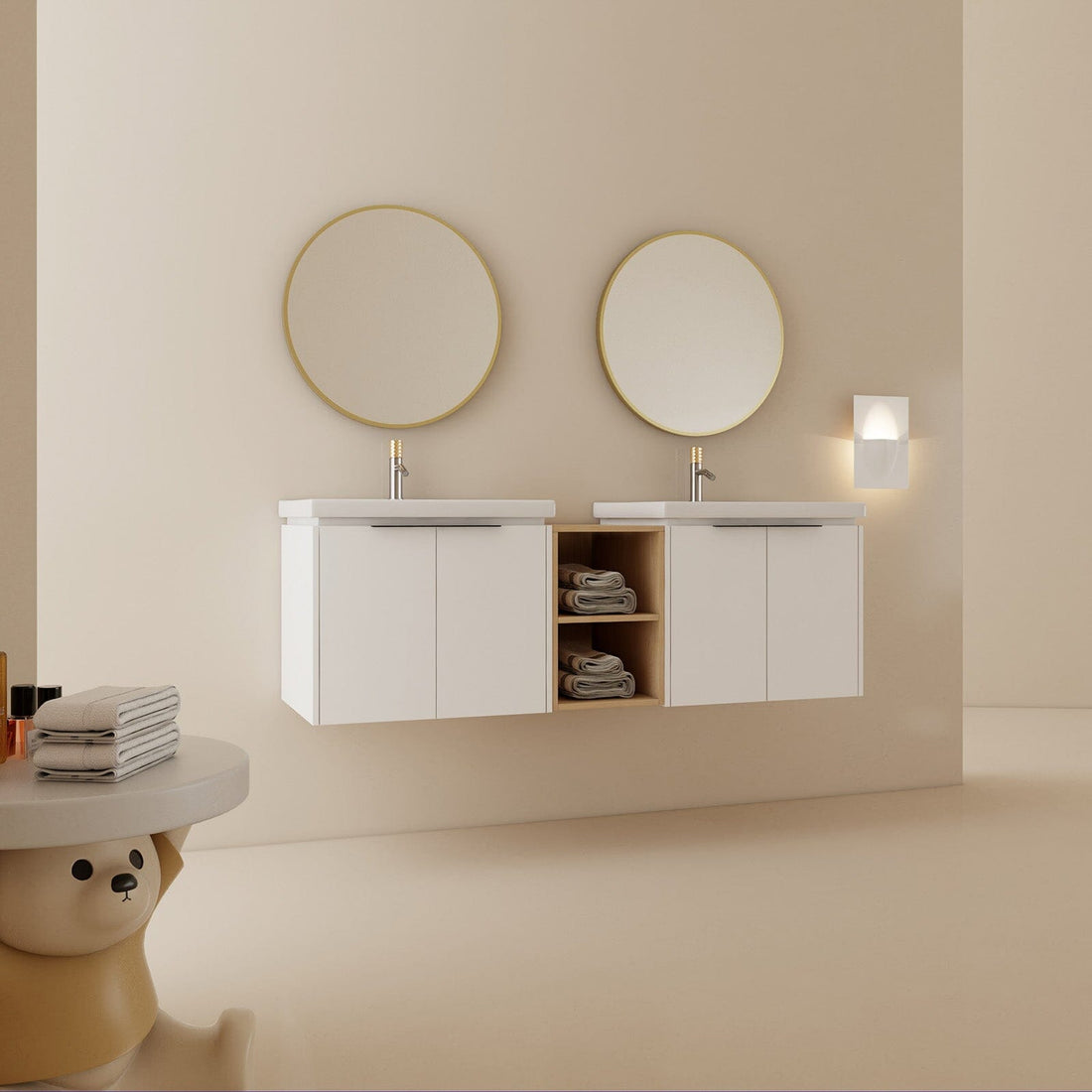 Giving Tree 60" Wall-mounted Bathroom Vanity with Sink and Storage Shelves
Giving Tree 60" Wall-mounted Bathroom Vanity with Sink and Storage Shelves- Regular price
-
$1,199.99 - Regular price
-
- Sale price
-
$1,199.99
Quick view
-
48" Modern Design Floating Bathroom Vanity with Drop-Shaped Resin Sink
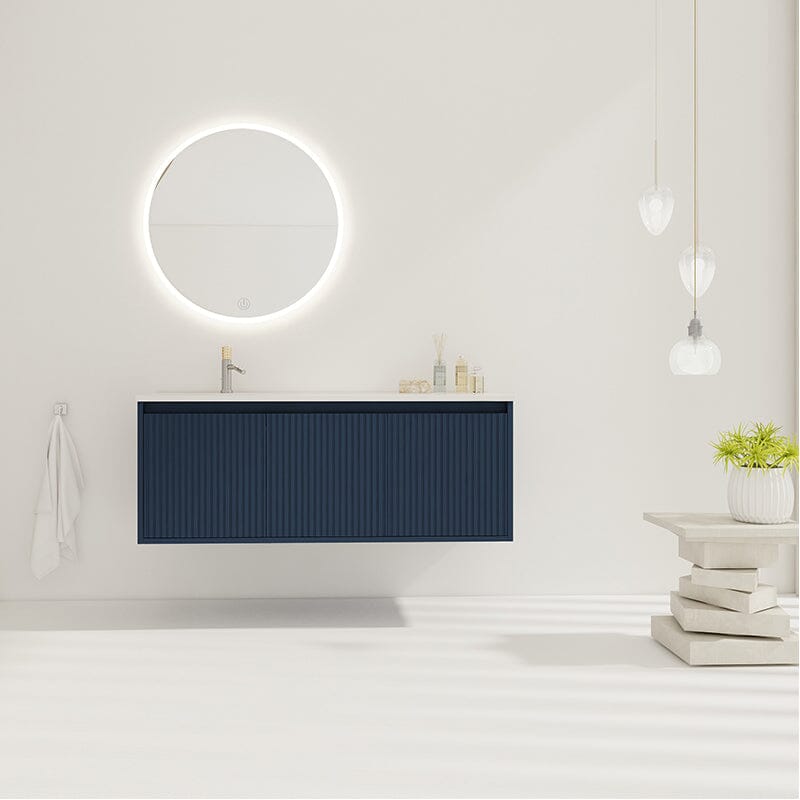
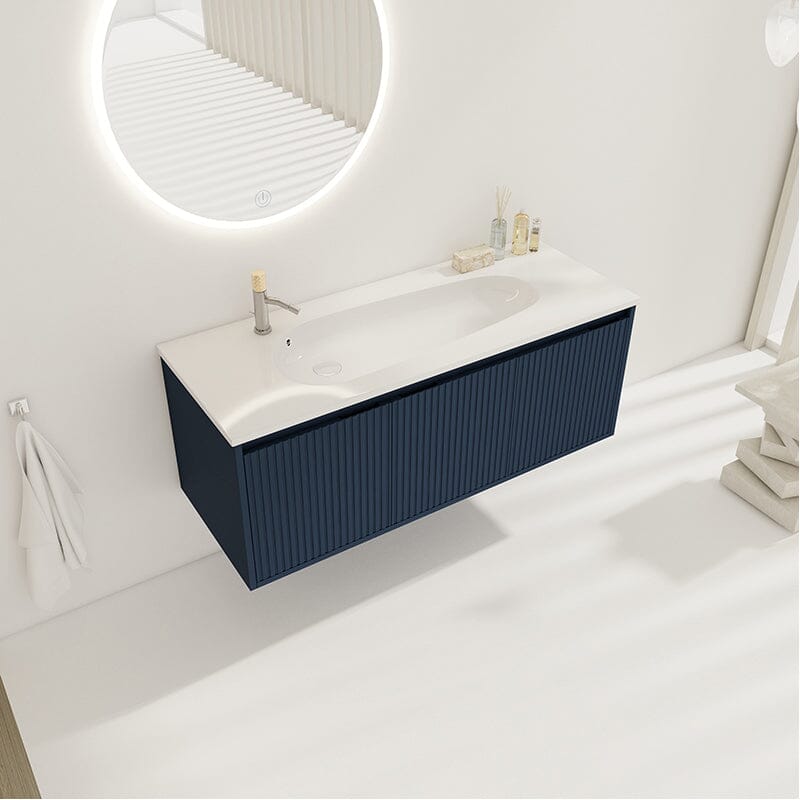 48" Modern Design Floating Bathroom Vanity with Drop-Shaped Resin Sink
48" Modern Design Floating Bathroom Vanity with Drop-Shaped Resin Sink- Regular price
-
$949.99 - Regular price
-
- Sale price
-
$949.99
Quick view
-
36-Inch Modern Freestanding Bathroom Vanity Sink Set with Storage Drawers
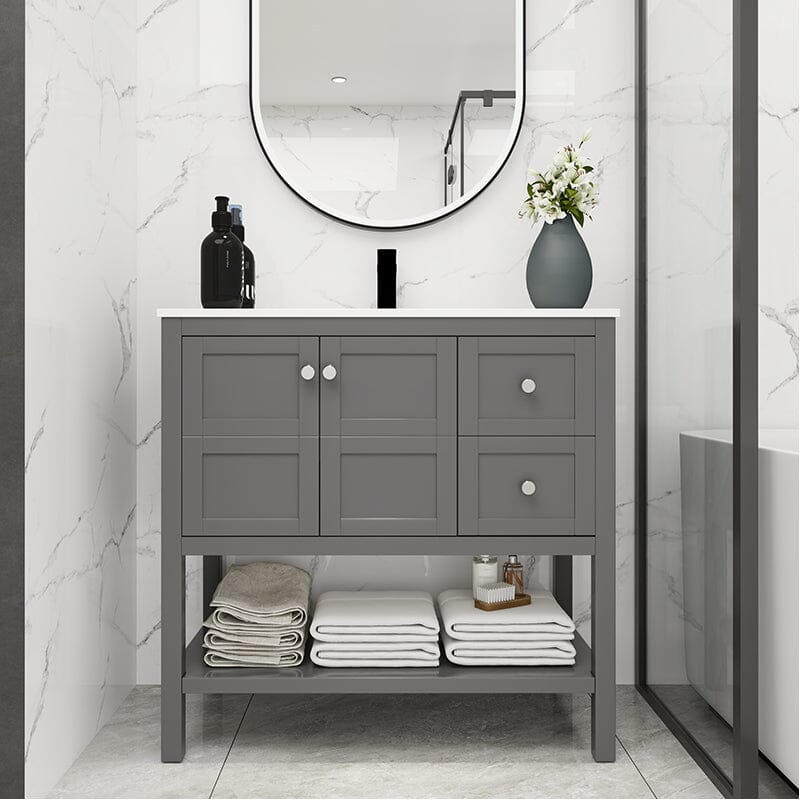
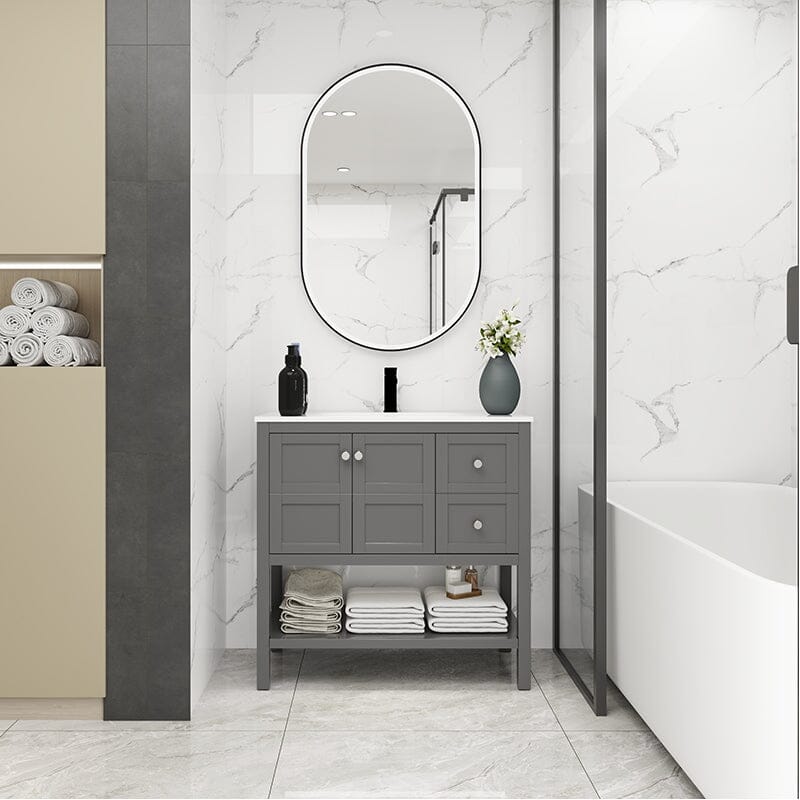 36-Inch Modern Freestanding Bathroom Vanity Sink Set with Storage Drawers
36-Inch Modern Freestanding Bathroom Vanity Sink Set with Storage Drawers- Regular price
-
$899.00 - Regular price
-
- Sale price
-
$899.00
Quick view
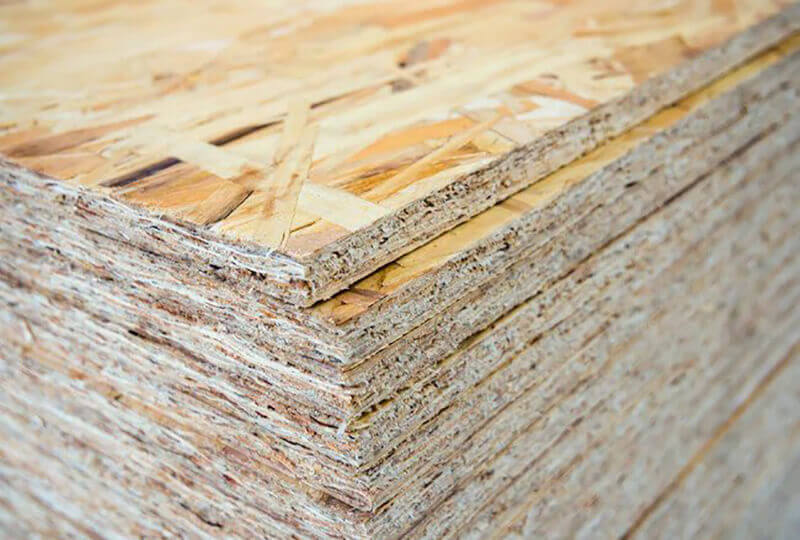
Oriented Strand Board
Oriented Strand Board (OSB), also known as Aspenite, originated in the 1970s and rapidly developed in North America and Europe from the mid-1980s. As a new type of high-strength, environmentally friendly structural panel, OSB has begun to replace plywood and fiberboard in many applications.
-
Advantages
- OSB is relatively low-cost due to its use of smaller and lower-quality wood parts in the manufacturing process.
- Surface treatments can enhance its water resistance to suit humid environments.
-
Disadvantages
- The surface is rough, and the arrangement of wood chips is usually not suitable for exposed decorative surfaces.
- The way the wood chips are arranged makes OSB prone to splintering when cut, requiring additional treatment.
-
Applications
- Mainly suitable for budget-limited furniture projects or structural furniture components.
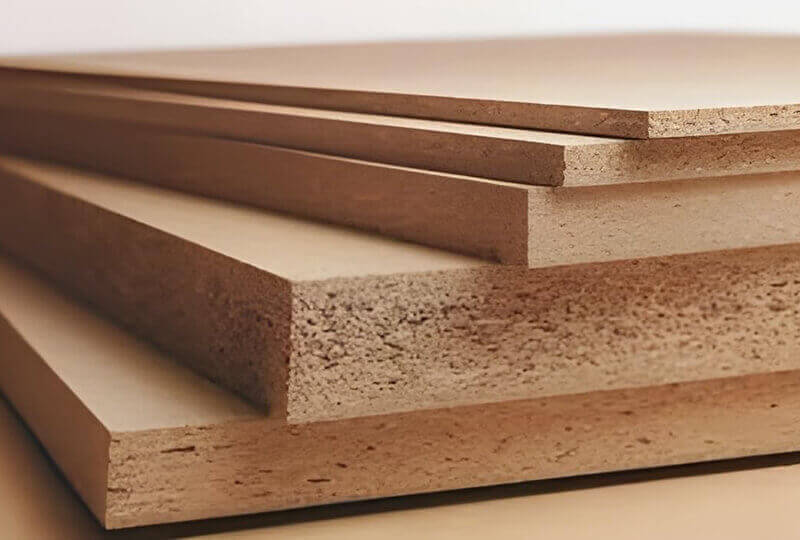
Medium-Density Fiberboard
Medium-Density Fiberboard, or MDF, is a type of engineered wood made by mechanically separating and chemically treating wood or plant fibers, mixed with adhesives and waterproofing agents, and then formed under high temperature and pressure. It is an ideal material for furniture making.
-
Advantages
- The smooth surface makes it perfect for painting, sticking paper, or covering with decorative layers.
- Its density, usually between 600-800 kg/m³, and low expansion make it easy to process.
-
Disadvantages
- Untreated MDF is prone to absorbing water and swelling, making it unsuitable for humid environments.
- Compared to solid wood, MDF has lower strength and bending resistance.
-
Applications
- Suitable for furniture parts requiring high hardness and wear resistance, such as tabletops, flooring, and cabinet doors.
-
20" White Bathroom Vanity with Sink, Two-Tier Shelf & Adjustable Solid Wood Cabinet
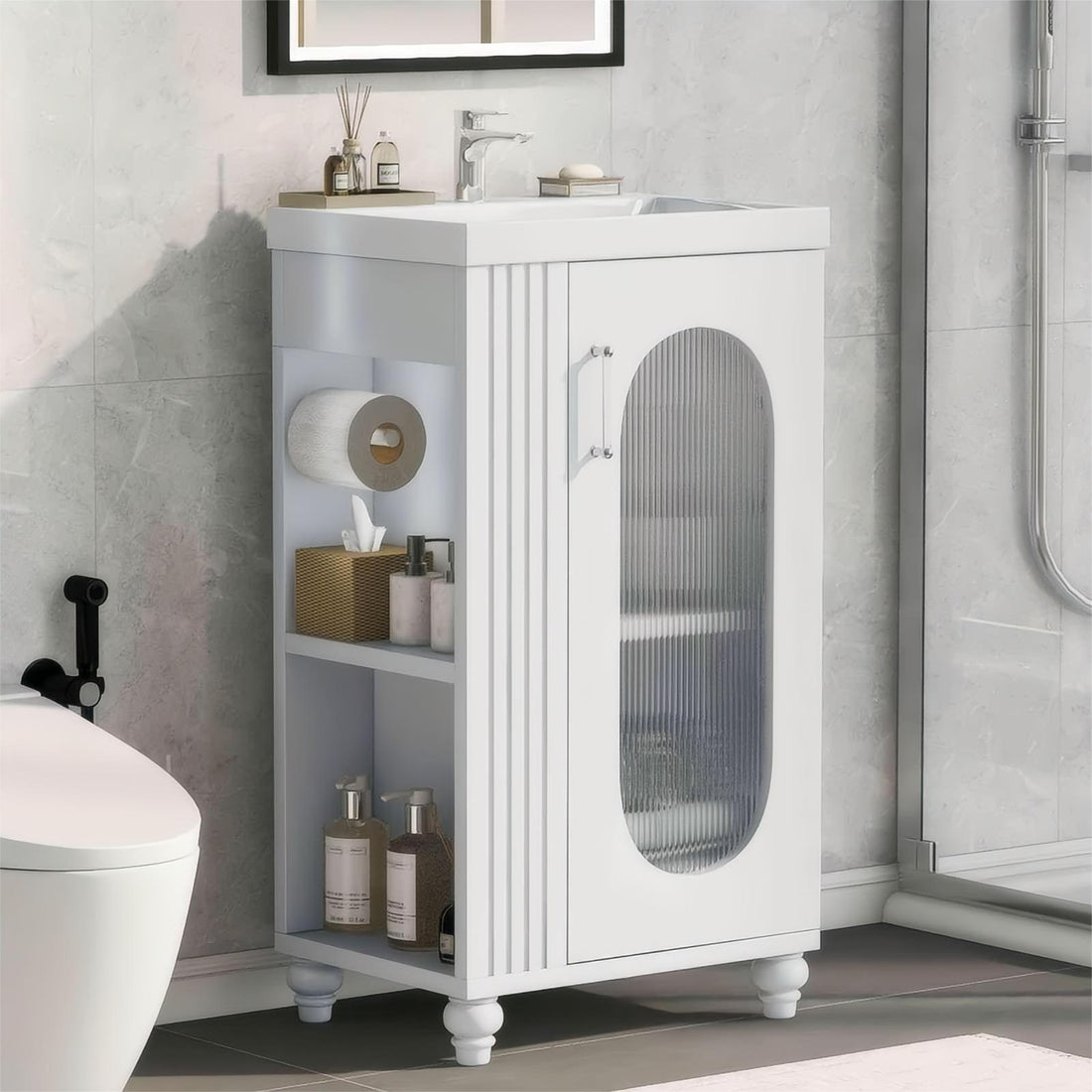
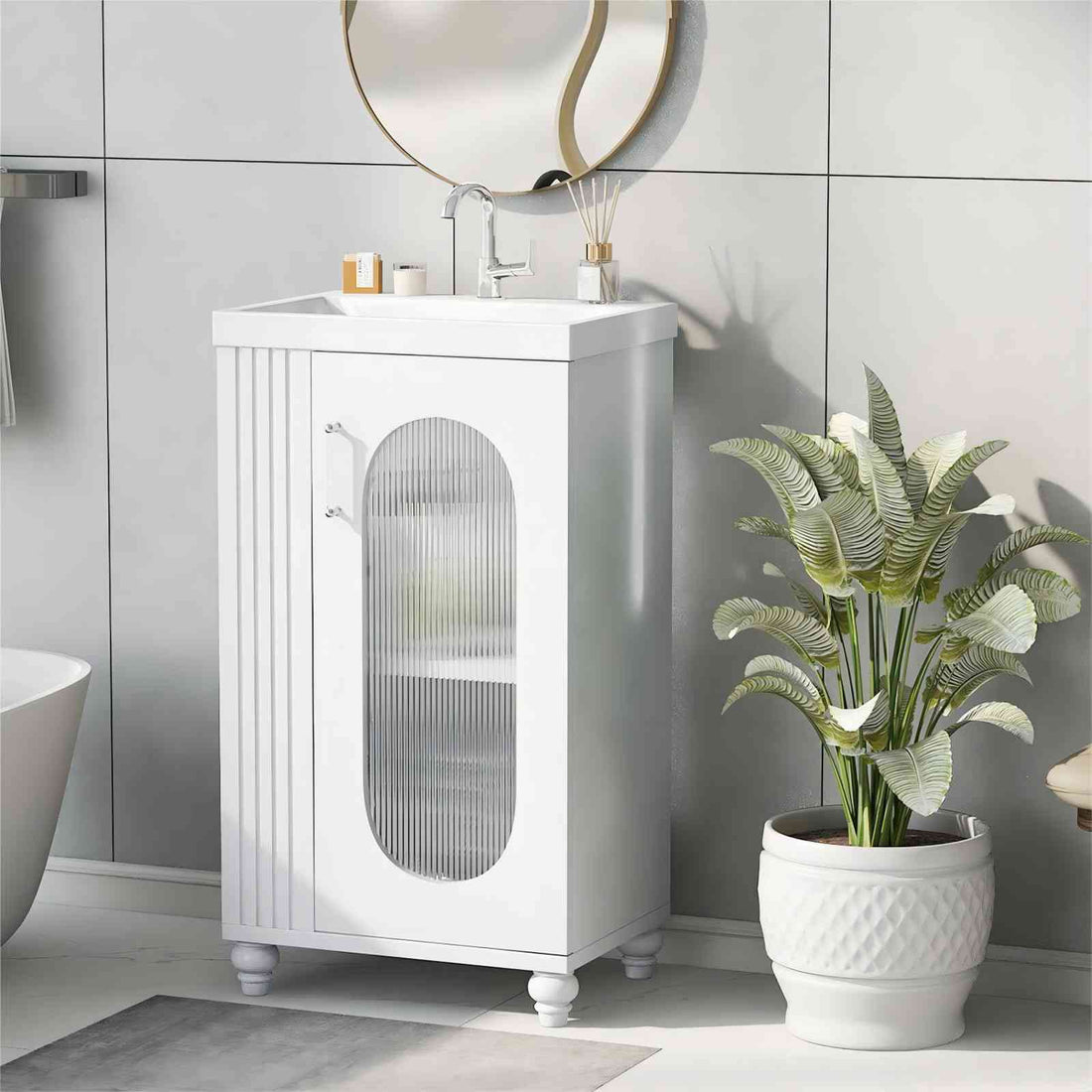 20" White Bathroom Vanity with Sink, Two-Tier Shelf & Adjustable Solid Wood Cabinet
20" White Bathroom Vanity with Sink, Two-Tier Shelf & Adjustable Solid Wood Cabinet- Regular price
-
$416.99 - Regular price
-
- Sale price
-
$416.99
Quick view
-
21.6'' Freestanding Bathroom Vanity with Ceramic Sink and Left Side Storage
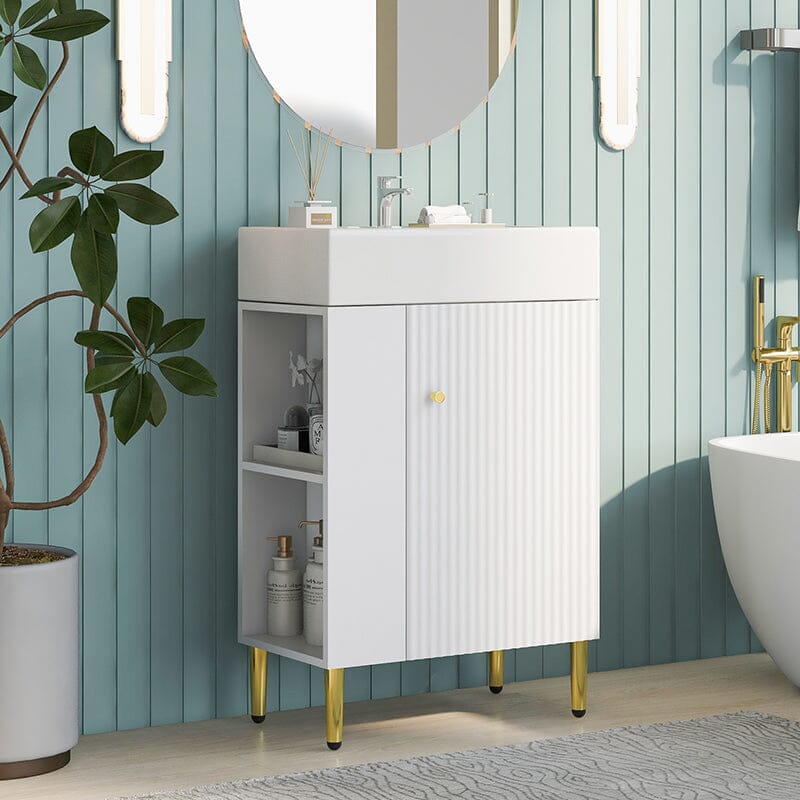
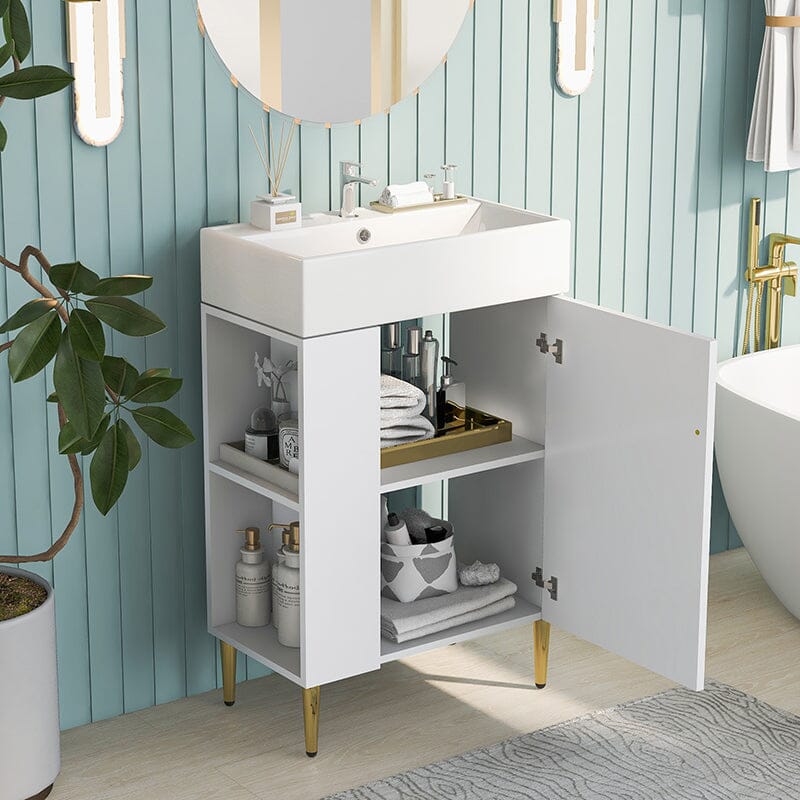 21.6'' Freestanding Bathroom Vanity with Ceramic Sink and Left Side Storage
21.6'' Freestanding Bathroom Vanity with Ceramic Sink and Left Side Storage- Regular price
-
$379.99 - Regular price
-
$529.99 - Sale price
-
$379.99
Quick view
-
24'' Walnut Freestanding Bathroom Vanity with Open Shelf
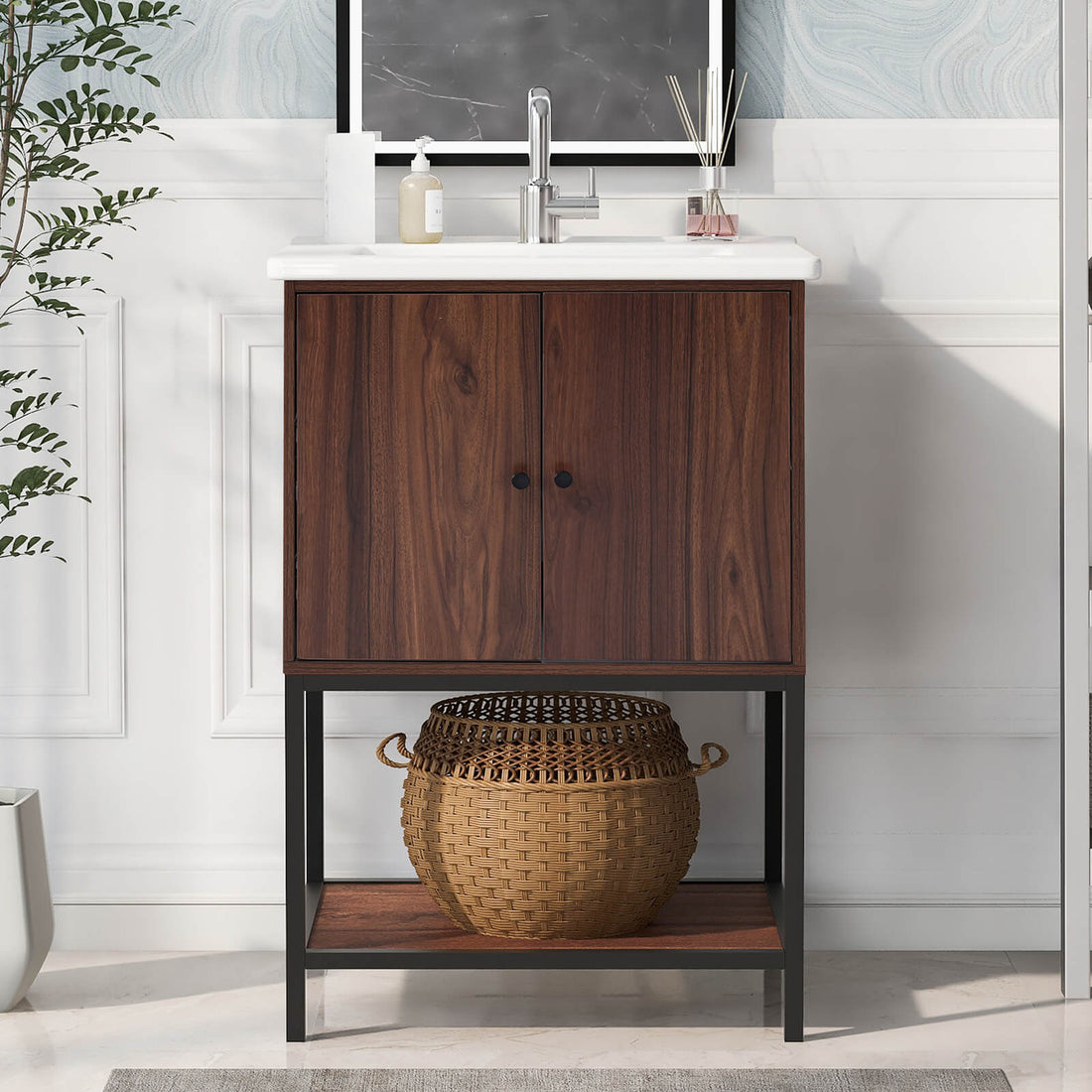
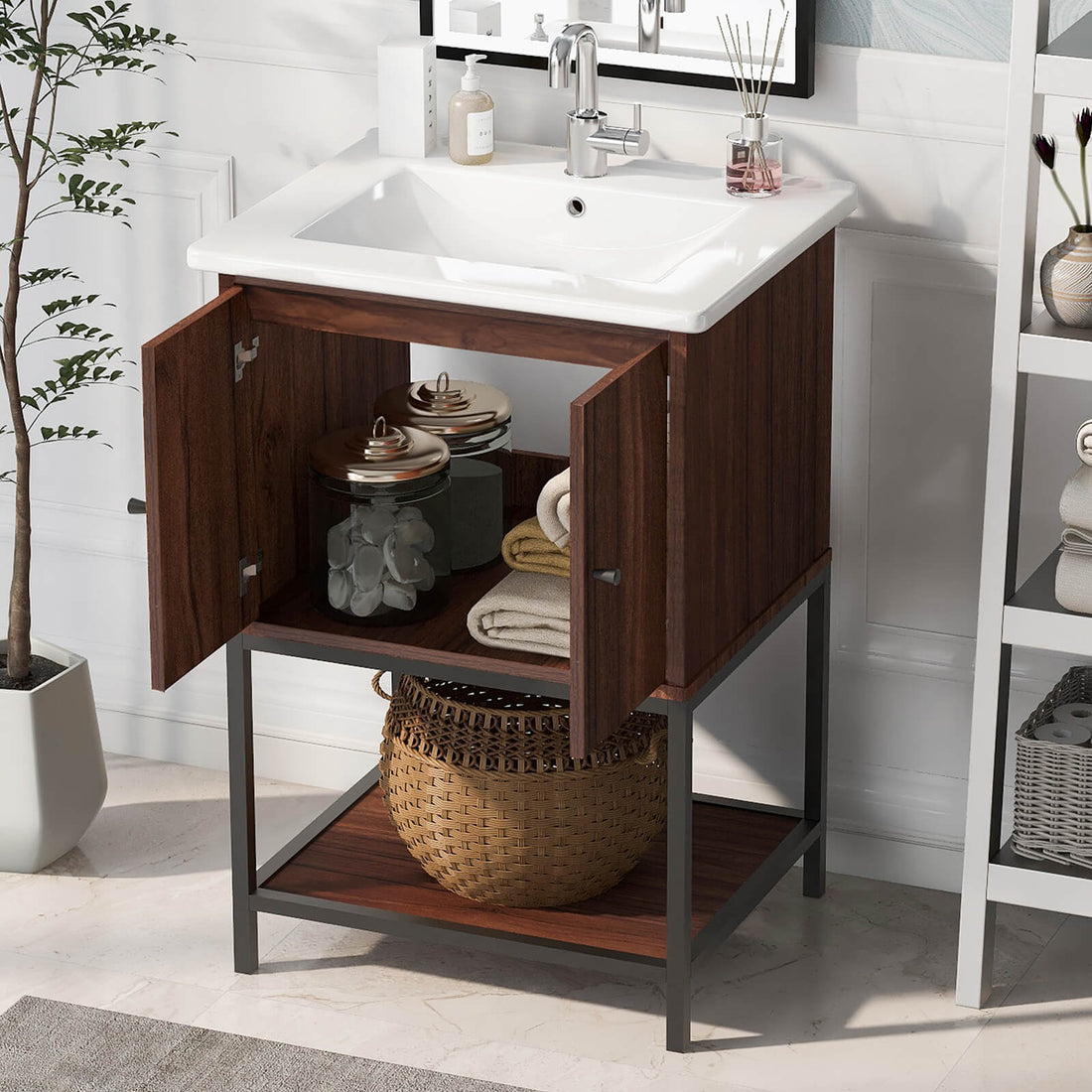 24'' Walnut Freestanding Bathroom Vanity with Open Shelf
24'' Walnut Freestanding Bathroom Vanity with Open Shelf- Regular price
-
$379.98 - Regular price
-
$599.99 - Sale price
-
$379.98
Quick view
-
30'' Sage Green Wall-Mounted MDF Bathroom Vanity
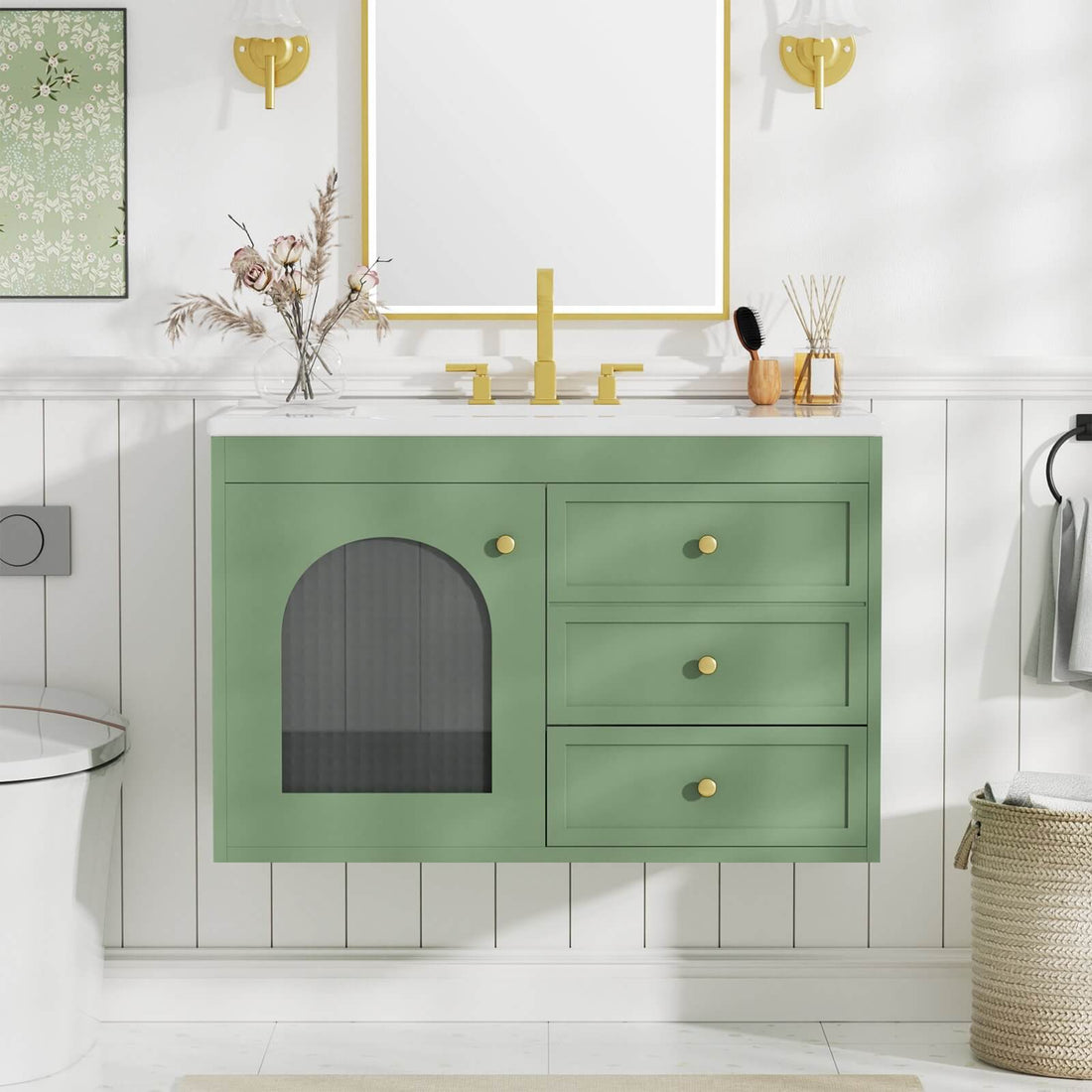
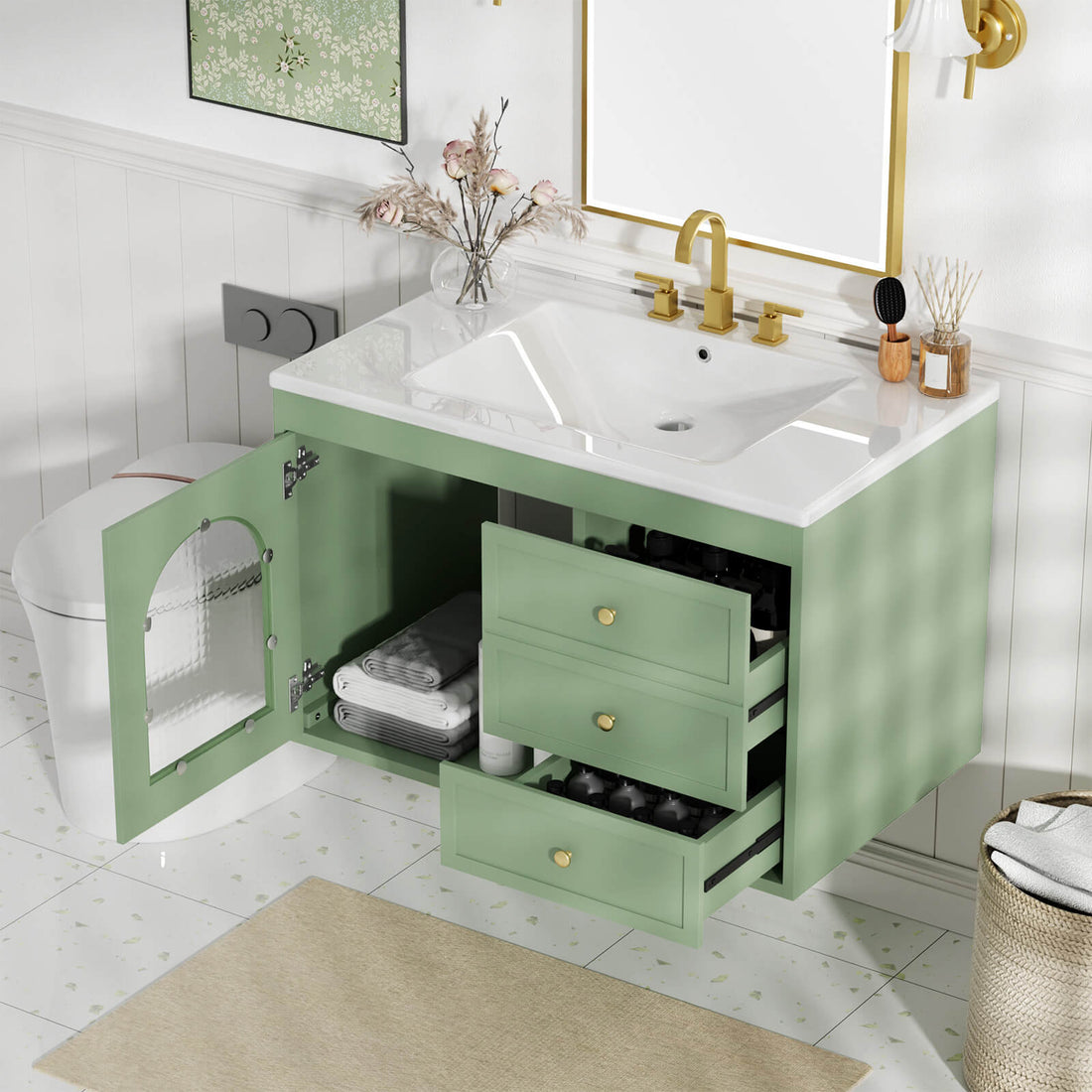 30'' Sage Green Wall-Mounted MDF Bathroom Vanity
30'' Sage Green Wall-Mounted MDF Bathroom Vanity- Regular price
-
$518.99 - Regular price
-
- Sale price
-
$518.99
Quick view
Ending
The 5 types of engineered wood introduced in this article are the most common for furniture manufacturing, each with its advantages, making them suitable for different scenarios. Taking the bathroom vanities sold by Giving Tree Home as an example, which includes plywood and MDF, plywood bathroom vanities are the most famous, achieving the best balance between price and quality. For instance, plywood bathroom vanities are usually priced under $1,000 and are very suitable for use in humid environments like bathrooms.
More Ideas
-

What Is a Shower Pan—and Do You Really Need One?
If you’re getting ready to renovate your bathroom on your own, you’ve probably run into a jungle of confusing terms. The same product may have multiple names, different materials come...
-

Shower Pan Installation: 6 Steps from Selection to Finish
Have you ever experienced this: after taking a shower, your bathroom floor is either soaked or has a puddle of water? It’s not just a hassle to clean—it’s also a...
-

Shower Pan Size Guide: Must-Know Dimensions Before You Buy
When planning a shower, most of us immediately think about style and layout. But the details that truly shape your daily experience often lie beneath your feet—that’s where the shower...
-

What’s the Best Material for a Vessel Sink?
When it comes to designing a bathroom, you might not give much thought to the material of your sink. After all, traditional under-mount sinks are usually ceramic, leaving little room...
-

Vessel vs. Undermount Sinks: Which Fits Your Bathroom Best
When you’re updating a bathroom, the sink you choose does more than just hold water—it sets the tone for the entire space. The right style can elevate your vanity, influence...
-

Are Vessel Sinks Still in Style?
If you’re remodeling your bathroom in 2026, you might be wondering: are vessel sinks still in style? For many homeowners, this is a common question when deciding on a bathroom...






























